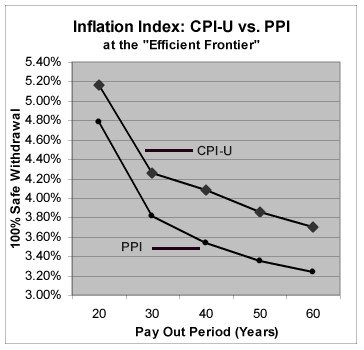This might already be common knowledge to the number crunchers.
Assuming a perfect financial world, where inflation is constant at 3%. The 4% SWR would be equivalent to an ROI of 7.3%.
In other words, if your ROI is constant at 7.3%, inflation is constant at 3%, you can use the 4% SWR forever, and your principal would also remain constant forever, in inflation adjusted dollars.
Assuming a perfect financial world, where inflation is constant at 3%. The 4% SWR would be equivalent to an ROI of 7.3%.
In other words, if your ROI is constant at 7.3%, inflation is constant at 3%, you can use the 4% SWR forever, and your principal would also remain constant forever, in inflation adjusted dollars.

